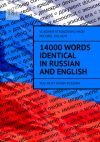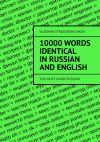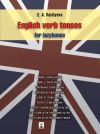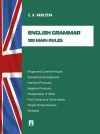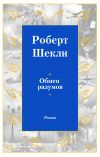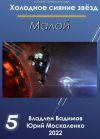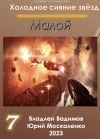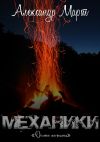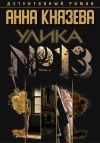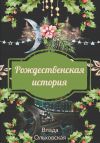Текст книги "Изучаем английский язык. Читаем англоязычную литературу"

Автор книги: Ирина Игнатенко
Жанр: Учебная литература, Детские книги
сообщить о неприемлемом содержимом
Текущая страница: 1 (всего у книги 7 страниц) [доступный отрывок для чтения: 2 страниц]
И. И. Игнатенко, Л. Ю. Морозова
Изучаем английский язык. Читаем англоязычную литературу Учебное пособие
I. Language
1. How do you use language in your life?
When we start thinking about what defines us as human beings, and we ask people around us that question, most likely among the first answers that we will get is going to be language or languages. The ability to learn and use languages is our most prized human ability. It probably played a decisive role in our evolving as a species. Also unique, and very useful, is our ability to learn a second language, a third language, a fourth language. Not our mother tongue that we grew up speaking.
Not just lingualism, which would be the ability to acquire and use a language, but multilingualism, the ability to learn and use many languages throughout our lifetime, is another fundamental dimension of the human condition. Indeed, available data indicate that there are more bilinguals in this world than monolingual individuals.
What do we know when we know language?
“If you pose the question of ‘What defines us as human beings?’ to people around you, most likely, among the first answers that you get, they will mention ‘language’ or ‘languages’.
The ability to produce and understand language in order to satisfy our communication needs is our most prized human ability. It is a fundamentally human capacity that relies on unique brain circuitry. It has probably played a decisive role in our evolving as a species…”
Our examples here will be from English, but think about the principles that apply to other languages, the languages you know. Everybody has heard a finite number of sentences in their life, but is capable of producing an infinite amount of sentences. For example, «The sun is shining» is an acceptable sentence in English, while «The sun shining is» does not seem like a good sentence, although we probably understand what it means. The ability of the speaker is not only to produce an infinite number of sentences, but also to distinguish them from the ones that are not acceptable.
This is true not only of sentences, but of larger and smaller units of language, such as phrases or conversations. Since the seminal work of the American linguist Noam Chomsky in the ‘50s transformed linguistics as a science, linguists have come to study human language as another attribute of our species. This research tradition proposes that the ability to speak language– is just one natural product, just like our ability to see and to walk– and it is because we are human beings that we have this ability to speak. What is language acquisition? What do we know when we know language? Learners have to be surrounded by linguistic input.
And that can be provided by parents, siblings, peers, in general the linguistic community of the learner, no matter whether the learner is a child or a second language learner. For example, a second language learner of Mandarin Chinese may be exposed to the language in a classroom, but may improve when she goes on a visit or study abroad to China. The point is that there is nothing genetic about language, and it is the language acquisition ability that is genetic. But the specific languages come from the inputs that we are exposed to throughout our life times.
Questions:
1. How far do you agree that our ability to learn languages is a genetic or a natural part of being human?
2. What other kinds of knowledge does knowing a language give us?
2. Origin and development of English
The history of the English language really started with the arrival of three Germanic tribes who invaded Britain during the 5th century AD. These tribes, the Angles, the Saxons and the Jutes, crossed the North Sea from what today is Denmark and northern Germany. At that time the inhabitants of Britain spoke a Celtic language. But most of the Celtic speakers were pushed west and north by the invaders – mainly into what is now Wales, Scotland and Ireland. The Angles came from Englaland and their language was called Englisc – from which the words England and English are derived.
Old English (450–1100 AD). The invading Germanic tribes spoke similar languages, which in Britain developed into what we now call Old English. Old English did not sound or look like English today. Native English speakers now would have great difficulty understanding Old English. Nevertheless, about half of the most commonly used words in Modern English have Old English roots. The words BE, STRONG and WATER, for example, derive from Old English. Old English was spoken until around 1100.
Middle English (1100–1500). In 1066 William the Conqueror, the Duke of Normandy (part of modern France), invaded and conquered England. The new conquerors (called the Normans) brought with them a kind of French, which became the language of the Royal Court, and the ruling and business classes. For a period there was a kind of linguistic class division, where the lower classes spoke English and the upper classes spoke French. In the 14th century English became dominant in Britain again, but with many French words added. This language is called Middle English. It was the language of the great poet Chaucer (c1340–1400), but it would still be difficult for native English speakers to understand today.
Early Modern English (1500–1800). Towards the end of Middle English, a sudden and distinct change in pronunciation (the Great Vowel Shift) started, with vowels being pronounced shorter and shorter. From the 16th century the British had contact with many peoples from around the world. This, and the Renaissance of Classical learning, meant that many new words and phrases entered the language. The invention of printing also meant that there was now a common language in print. Books became cheaper and more people learned to read. Printing also brought standardization to English. Spelling and grammar became fixed, and the dialect of London, where most publishing houses were, became the standard. In 1604 the first English dictionary was published.
Late Modern English (1800-Present). The main difference between Early Modern English and Late Modern English is vocabulary. Late Modern English has many more words, arising from two principal factors: firstly, the Industrial Revolution and technology created a need for new words; secondly, the British Empire at its height covered one quarter of the earth’s surface, and the English language adopted foreign words from many countries.
From around 1600, the English colonization of North America resulted in the creation of a distinct American variety of English. Some English pronunciations and words «froze» when they reached America. In some ways, American English is more like the English of Shakespeare than modern British English is. Some expressions that the British call «Americanisms» are in fact original British expressions that were preserved in the colonies while lost for a time in Britain (for example trash for rubbish, loan as a verb instead of lend, and fall for autumn; another example, frame-up, was re-imported into Britain through Hollywood gangster movies). Spanish also had an influence on American English (and subsequently British English), with words like canyon, ranch, stampede and vigilante being examples of Spanish words that entered English through the settlement of the American West. French words (through Louisiana) and West African words (through the slave trade) also influenced American English (and so, to an extent, British English).
Today, American English is particularly influential, due to the USA’s dominance of cinema, television, popular music, trade and technology (including the Internet). But there are many other varieties of English around the world, including for example Australian English, New Zealand English, Canadian English, South African English, Indian English and Caribbean English.
Assignment:
• Write the summary of the text.
3. The English language: from the past to nowadays
Two thousand years ago the British Isles were inhabited by speakers of Celtic languages. These languages still survive in parts of Wales, Scotland, Ireland and Brittany in France. The Celts were conquered by the Romans and from 43BC to about AD 410 the areas which are now England and Wales were part of the Roman Empire and Latin was the language of government. Between the fourth and seventh centuries AD the Anglo-Saxons arrived from what is now northern Germany, Holland and Denmark and occupied most of England and parts of southern Scotland. In some parts of Wales, Scotland and Ireland people still speak Celtic languages. The Anglo-Saxons spoke a Germanic language which forms the basis of modern English. This language was modified by the arrival of Viking invaders in the north and east of the country who came from Norway and Denmark between the eighth and eleventh centuries. These Scandinavian settlers spoke Old Norse, which was related to Anglo-Saxon, and which is the parent language of modern Danish. The mixing of the two languages greatly enriched the vocabulary of English. By the middle of the tenth century England had become a unified country under one king.
In 1066 England was conquered by the French-speaking Normans, and French became the language of government. For the next three hundred years three languages co-existed. The aristocracy spoke French; the ordinary people spoke English, while Latin was used in the church. Modern English evolved from the mingling of the three tongues. Today English vocabulary is approximately half Germanic (from the Saxons and Vikings) and half Romance (from French and Latin). There are however considerable borrowings from other languages.
Some derived words:
Old English shirt, life, death, heaven, earth, love, hate
Old Norse skirt, birth, window, ugly, wrong, they, their, them
French boil, roast, veal, beef, pork, village, painter, tailor
Latin index, item, major, memorandum
Features of the English language. English has changed so much in the last 1500 years that it would now be hardly recognizable to the Anglo-Saxons who brought the language across the North Sea. Although they would be able to recognize many individual words, they would not recognize the way those words are put together to make sentences. Old English, like modern German, was a highly inflected language, i.e. most words changed their endings or forms to show their relationship to other words in the sentence according to number (singular, plural), gender (masculine, feminine, neuter), case (subject, object), tense (past, future) etc. Some modern English words still inflect, but much less so than in other European languages. The English verb ‘to ride’ inflects into five forms (ride, rides, riding, rode, ridden) whereas the equivalent German verb has sixteen forms. The English word ‘the’ has only one form, whereas other European languages would have several different forms. The trend towards simplicity of form is considered to be a strength of English. Another strength is the flexibility of function of individual words. Look at the use of the word ‘round’:
There was a round table. (adjective)
He bought a round of drinks. (noun)
He turned round. (adverb)
He ran round the field. (preposition)
The car tried to round the bend too quickly. (verb)
This flexibility, together with a flexibility towards the assimilation of words borrowed from other languages and the spontaneous creation of new words have made English what it is today, an effective medium of international communication. English has achieved this in spite of the difficulties caused by written English, which is not systematically phonetic.
Some loan words:
Arabic admiral, algebra, mattress
Spanish mosquito, cigar, canyon
Italian piano, violin, spaghetti
Dutch yacht, boss, deck
Hindi pyjamas, shampoo, bungalow
Turkish yoghurt, kiosk
Japanese tycoon, karate
Malay bamboo, compound
Aztec tomato, chocolate
Hungarian coach, paprika
Classical Greek theatre, astronomy, logic
Gaelic whisky
Russian vodka, sputnik
Finnish sauna
Chinese tea, silk
Portuguese marmalade
Eskimo anorak
Czech robot
Farsi lilac
Australian Aborigine kangaroo, boomerang
Modern French rendezvous, café
Modern German kindergarten
Some ‘created’ words:
xerox, to xerox, xeroxed
mackintosh, sandwich, submarine, helicopter, pop, rock’ n roll, x-ray, astronaut, hot dog.
Assignment:
• Give a talk on the history of the English language.
• Discuss with your partner the composition of Modern English vocabulary.
• Speak about the distinguishing features of English.
• Think of more examples of borrowings from different languages.
4. English today
Millions of people speak English as their first language. About the same number use it as a second language. It is the language of aviation, international sport and pop music. 75% of the world’s mail is in English, 60% of the world’s radio stations broadcast in English and more than half of the world’s periodicals are printed in English. It is the official language in 44 countries. In many others it is the language of business, commerce and technology. There are many varieties of English, but Scottish, Texan, Australian, Indian and Jamaican speakers of English, in spite of the difference in pronunciation, structure and vocabulary, would recognize that they are all speaking the same basic language.
English is regarded as the global language – but will this still be true for the rest of the 21st century? The world in which it is used is going through such huge changes that there is a possibility it will lose its place as the world’s most important language. For example, in the 20th century, western countries helped the spread of English. They were the strongest economies. Now Asian economies are growing in strength and want to promote their own cultures and languages.
Another threat to the English language’s position is old age. Rich countries are getting older – or rather their populations are made up of more old people than young people. In the future young people with money to spend will be found in Asia and Latin America, and they may want to express their desires in their own languages.
There are many possibilities for the future. We can imagine a world where English is simply an alternative language to Chinese or Spanish. These are languages that already have more native speakers (Chinese) or very wide use across the world (Spanish). Geographically, though, English still remains the most widespread language on Earth, second only to Chinese in the number of people who speak it.
Assignments:
• Explain the popularity of the English language today.
• Do you think that English will retain its position as the global language in future? Why/ Why not?
• Write an essay on the history and importance of your native language.
5. Lexicology
Lexicology is a branch of linguistics, the science of language. The term LEXICOLOGY is composed of two Greek morphemes: LEXIS meaning “word, phrase” and LOGOS which denotes “learning, a department of knowledge”. Thus the literal meaning of the term LEXICOLOGY is “the science of the word”. The literal meaning, however, gives only a general notion of the aims and the subject-matter of this branch of linguistic science, since all its other branches also take account of words in one way or another approaching them from different angles. Phonetics, for instance, investigating the phonetic structure of language (its system of phonemes and intonation patterns) is concerned with the study of the outer sound form of the word. Grammar, which is inseparably bound up with Lexicology, is the study of the grammatical structure of language. It is concerned with the various means of expressing grammatical relations between words and with the patterns after which words are combined into word-groups and sentences.
Lexicology as a branch of linguistics has its own aims and methods of scientific research, its basic task being a study and systematic description of vocabulary in respect to its origin, development and current use. Lexicology is concerned with words, variable word-groups, phraseological units, and morphemes that make up words.
Distinction is made between General Lexicology and Special Lexicology. General Lexicology is concerned with the study of vocabulary irrespective of the specific features of any particular language. Special Lexicology is the lexicology of a particular language, i.e. the study and description of its vocabulary and vocabulary units, primarily words as the main units of language.
There is also a close relationship between Lexicology and Stylistics or Linguo – Stylistics, which is concerned with the study of the nature, functions and structure of stylistic devices, on the one hand, and with the investigation of each style of language, on the other, i.e. with its aim, its structure, its characteristic features and the effect it produces as well as interrelation with the other styles of language.
It is a matter of common knowledge that the vocabulary of any language is never stable, never static, but is constantly changing, growing and decaying. The changes in the vocabulary of a language are due both to linguistic and extralinguistic causes or to a combination of both. The extralinguistic causes are determined by the social nature of the language.
There is a tremendous difference between Lexicology, on the one hand, and Phonology, Morphology and Syntax, on the other. Words, to a far greater degree than sounds or grammatical forms are subject to change, for the word-stock of a language directly and immediately reacts to changes in social life, to whatever happens in the life of the speech community in question.
Modern English Lexicology aims at giving a systematic description of the word-stock of Modern English. Words, their component parts – morphemes – and various types of word-groups are subjected to structural and semantic analysis. In other words, Modern Lexicology investigates the problems of word-structure and word-formation in Modern English, the semantic structure of English words, the various groupings, the laws governing the replenishment of the vocabulary with new vocabulary units.
Questions:
1. What is lexicology and its subject-matter?
2. How is lexicology linked with other branches of linguistics?
3. Why are words subject to change?
4. What is the aim of modern English lexicology?
6. Semasiology
All linguistic units may be said to have meaning of some kind. The branch of lexicology that studies meaning is known as SEMASIOLOGY. Meaning is one of the most controversial terms in the theory of language. There is no universally accepted definition of meaning. There are two schools of thought in the present-day linguistics representing the main lines of contemporary thinking on the problem: the referential approach, which seeks to formulate the essence of meaning by establishing the interdependence between words and the things or concepts they denote, and the functional approach, which studies the functions of a word in speech and is less concerned with what meaning is than with how it works.
Types of meaning. It is more or less universally recognized that word-meaning is not homogeneous but is made up of various components the combination and interrelation of which determine to a great extent the inner facet of the word. These components are usually described as types of meaning. The two main types of meaning are the grammatical and the lexical meanings.
Grammatical meaning. We notice, e.g., that word-forms, such as GIRLS, TABLES, TREES, etc. though denoting widely different objects of reality have something in common. This common element is the grammatical meaning of plurality which can be found in all of them. Thus grammatical meaning may be defined as the component of meaning recurrent in identical sets of individual forms of different words as, e.g., the tense meaning in the word-forms of verbs ( asked, thought, played, etc.) or the case meaning in the word-forms of various nouns ( girl’s, boy’s, children’s, etc.).
Lexical meaning. Unlike the grammatical meaning this component is identical in all forms of the word. Thus, e.g., the word-forms GO, GOES, WENT, GOING, GONE possess different grammatical meanings of tense, person and so on, but in each of these forms we find one and the same semantic component denoting the process of movement. This is the lexical meaning of the word which may be described as the component of meaning proper to the word as a linguistic unit, i.e. recurrent in all the forms of this word.
Both the lexical and the grammatical meaning make up the word-meaning as neither can exist without the other.
Lexical meaning is viewed as possessing denotational and connotational components. The denotational component is actually what makes communication possible. The connotational component comprises the emotive charge and the stylistic reference proper to the word as a linguistic unit in the given language system.
Words contain an element of emotive evaluation; e.g., A HOVEL denotes “a small house or cottage” and besides implies a miserable dwelling place, dirty in bad repair and in general unpleasant to live in. When examining synonyms LARGE, BIG,TREMENDOUS and LIKE, LOVE, WORSHIP we notice the difference in emotive charge of the members of these sets. The emotive charge of the words TREMENDOUS, WORSHIP is heavier than that of the words LARGE, LIKE. This does not depend on the “feeling” of the individual speaker but is true for all speakers of English. The emotive charge is one of the objective semantic features proper to words as linguistic units and forms part of the connotational component of meaning.
Words differ not only in their emotive charge but also in their stylistic reference. Stylistically words can be divided into literary, neutral and colloquial layers.
The greater part of the literary layer of modern English vocabulary are words of general use, possessing no specific stylistic reference are known as NEUTRAL WORDS. Against the background of neutral words we can distinguish two major subgroups – literary or bookish words and standard colloquial words. This may be best illustrated by comparing words almost identical in their denotational meaning, e.g., PARENT – FATHER – DAD. In comparison with the word FATHER which is stylistically neutral, DAD stands out as colloquial and PARENT is felt as bookish.
The colloquial words may be subdivided into:
1. Common colloquial words.
2. Slang, i.e., words which are regarded as a violation of the norms of Standard English, e.g., MISSUS for wife, GOVERNOR for father, DOTTY for insane.
3. Professionalisms, i.e., words used in narrow groups bound by some occupation such as Lab for “laboratory”, A BUSTER for “a bomb”, etc.
4. Jargonisms, i.e., words marked by their use within a particular social group and bearing a secret, e.g., A SUCKER a person who is easily deceived.
5. Vulgarisms, i.e., coarse words that are not generally used in public, e.g., BLOODY, HELL, DAMN, SHUT UP, etc.
6. Dialectal words, e.g., lass, kirk, etc.
Questions:
1. What does semasiology study?
2. Why is it difficult to give a definition of meaning?
3. What are the distinctions between lexical and grammatical meaning?
4. How are words subdivided stylistically?
